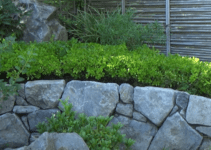First, you need to know that not all insects are bad. It is true that they can be quite annoying, buzzing all around and biting you, but many of them are beneficial for your garden. The most important thing for any gardener is to know which ones are his friends or his foes.

Photo by Design 5 Landscape Architecture – Search exterior home pictures
Not long ago, DDT and other pesticides were used in excess in a garden or lawn, to combat insect proliferation. The result was that these chemicals have killed both “good” and “bad” insects, affecting at the same time, the environment.
Do you want to protect your garden and at the same time, our environment? Then maybe, you should know which ones are the beneficial insects and how to attract them to your garden.
There are companies that sell “good” bugs such as beetles for your gardens. Beetles will eat the “bad” bugs. Unfortunately, you cannot be sure that they will remain in your garden and will not fly away. More important is that you to attract the “good” guys, and keep them in your garden.
Therefore, it makes sense to grow plants that attract the “good” bugs to your garden.
Which are “good”, which are “bad”? or Eating your garden or Defending it?
How can you distinguish between “good” and “bad” bugs?
It is a natural question and any homeowner will ask this question. Of course, there are many specialized illustrated publications or you can find the necessary information online, yet there is a simple principle to distinguish between “good” and “bad” bugs.
You should ask yourself which insects are eating your garden and which ones are defending your garden against the harmful ones. Your own experience will count more than all the illustrations or online information. More than that, your study correlated with images and online information can help you tremendously.
A good and smart idea is to capture an insect and take it to a garden center. The garden staff will be able to help you to determine if this bug is harmful or not. In other words, these bugs are eating your garden or are defending it?
How to attract good bugs to your garden
Let’s see several tips to attract “good” bugs to your garden.
a) Your garden should have a diverse vegetation. Different flowers will attract a wide variety of insects.
b) “Good” bugs are attracted by certain species of plants. For example, Paw-Paw tree is the only plant that attracts Zebra swallowtail.
c) Do not remove all the weeds. Some weeds attract beneficial insects to your garden.
d) It is a good idea to let vegetables, herbs or greens such as chard, basil or arugula to seed whenever possible. Their growing stem and flower can attract insects.
e) Many plants have umbrella-shaped flowers such as yarrow flower that contain many tiny flowers. They are a very favorable environment for parasitoid wasp that feed on caterpillars and aphids.
f) Prefer native plants instead of exotic plants. They will attract the adequate pollinators.
g) Planting your garden vegetation in vertical layers will create an ideal environment for many beneficial insects such as lacewings and ladybugs. These insects are excellent pollinators, consuming pollen when adults. When the larval stage they prefer to eat pest insects.
Plants that attract good bugs
Use how much is possible wildflowers for your garden to attract “good” bugs, because many hybrid plants have lost some of their characteristics that can attract beneficial insects. However, let’s see some of vegetables, flowers and herbs that can attract a wide variety of insects:
Lavender; Goldenrod; Baby’s Breath; Dill; Carrot; Spearmint;
Marigolds; Lemon Balm; Parsley; Nasturtiums; Mustard; Thyme;
Sunflowers; Rose-Scented Geraniums; Sweet Alyssum; Queen Anne’s Lace
Some species of “good” bugs
Let’s review some of the most common beneficial insects:
1| Ladybugs: Ladybug is one of the most common “good” bugs. The favorite of ladybug is scale, aphids, leafhoppers, aphids and generally, all soft-bodied pests. Therefore, they are great for your garden destroying these harmful insects. They will eat continue until all pests are gone. Then, they will lay their own eggs waiting until new pests come.
2| Syrphid Flies: Syrphid flies have several names such as flower flies or hover flies. Generally, they are colored in bright colours, black, orange or yellow. Because of this, they are sometimes confused with wasps or yellow jackets, but they are harmless insects.
As larvae, they feed on many species of harmful insects, especially soft-bodied pests.
3| Praying Mantis: Praying Mantis is Tyrannosaurus Rex of insects, a ferocious insect that feeds on many other bugs such as grubs, caterpillars, beetles, grasshoppers, aphids, in fact on all others insects. It is so ferocious that the female eats the male after mating.
4| Predator mites: Predator mites control spider mite population both inside and outside your home.
5| Spined soldier bug: Spined soldier bug is another amazing beneficial bug, whose larva feeds on grasshopper eggs, small caterpillars, etc. Usually, this bug is called “stinky bug”.
6| Hunting Wasps: Generally, the wasps’ favourite food is other insects. These hunting wasps can control your garden bug pests.
7| Spiders: All species of spiders feed on other insects or small arthropods. There are many web-making species of spiders but on the other hand there are many other species that do not make a web such as crab spiders, wolf spiders, jumping spiders, etc. they prefer to hunt their prey on plants or on soil.
8| Trichogramma Wasps: These insects are very small wasps that like to feed on the 2oo types of worm eggs. They lay their own eggs directly into the worm’ nest, and kill their eggs.
9| Green Lacewings: Green Lacewing is one of the most common insects of North America. As adults they are harmless but in the larval stage, they are fierce predators feeding on thrips, aphids, whiteflies, spider mites, leafhoppers eggs, moths, caterpillars, etc.
10| Beneficial Nematodes: These microscopic insects are extremely beneficial for any garden. They prefer to eat more than 200 species of “bad” bugs and worms such as cutworms, rootworms, fingus gnat, grubs, armyworms and many others. They get inside into their bodies killing them.
Harmony and Balance in Feng Shui Gardens | Smart Principles (howtobuildahouseblog.com)


